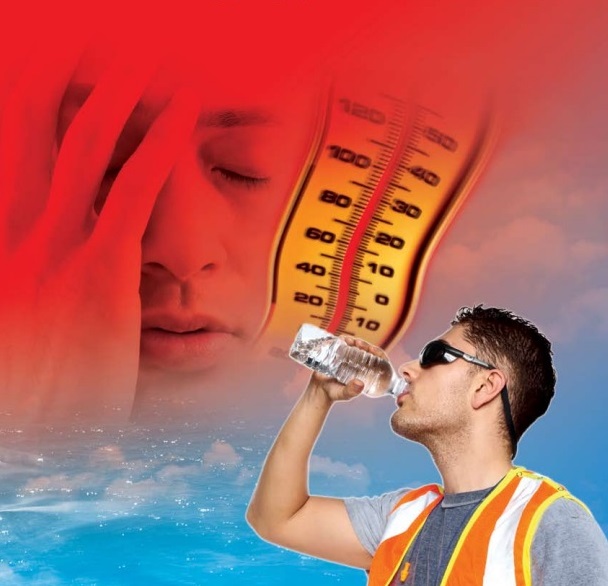Dealing with heat stress: Free downloadable guides, plans, and tools
By Dan Suess
Hazard Alert: Heat stress can be a killer
Typically by June, southern Ontario begins to experience temperature and humidity levels that affect workers in workplaces where heat-generating equipment is present; for example, large plants such as corrugating, printing, or where heat is applied in the manufacturing process.
Further north, even facilities with little to no hot equipment notice the temperature changing and begin to realize that July and August are just around the corner.
In all cases, daytime outdoor summer work also exposes workers to direct sun exposure causing body heat absorption as well as UV radiation and sunburn exposure to skin – an additional risk factor.
Planning for the “dog days of summer” in the workplace is often forgotten and by then, it’s too little too late. The health impact of raising internal body temperature can be devastating, even resulting in death.
What to do?
In many cases, workplaces may have developed a heat stress policy and a resulting heat stress plan from previous years. In that case, it’s time to review them and take into account any heat-related incidents that may have occurred and, as required, make adjustments, retrain workers and supervisors and implement the plan.
For workplaces that never “got around to it,” now is the time. A team of workers, supervisors and health and safety members need to be assembled to work through an assessment, policy development and implementation plan – including training – for all concerned.
What the law says
Although Ontario legislation does not specifically cover the hazard, the Ministry of Labour and its inspectors rely on the all-important “General Duty Clause” of the Occupational Health and Safety Act, which states under section 25(2)(h) that, “an employer shall take every precaution reasonable in the circumstances for the protection of a worker.”
Many tools and information resources are available – see below – in addition to sector-specific consultation, auditing and training by your Workplace Safety North (WSN) consultant-trainer. WSN freely offers related safety meeting talks with presentation material, hazard alert posters, research articles, links to legislation and other sources of information. You’re encouraged to print, post, and share material to encourage discussion and communication in your workplace.
About Dan Suess: Dan Suess was a health and safety consultant-trainer at Workplace Safety North with more than 30 years’ experience in the industrial, construction, and petrochemical sectors. Dan served firms in the Greater Toronto Area, and is a member of the Canadian Society of Safety Engineering.
Resources
Hazards of Working in the Sun - Occupational Health Clinic for Ontario Workers
Hot Environments – Health Effects - Canadian Centre of Occupational Health and Safety
Daily Humidex ratings – Ontario weather conditions and forecast by locations, Government of Canada

